Milling for International Markets
Investing in high quality Ukrainian wheat products
“Unfortunately, very little is known about Ukraine today on the world markets” explained Viktor Doroshenko, CEO of Skvyrskyi Grain Processing Factory. “Both in Europe and in Asia, buyers are often cautious about Ukrainian products and processors”.
Viktor and other Ukrainian millers are working hard to change this.

Viktor Doroshenko, CEO of Skvyrskyi Grain Processing Factory, inspecting the shell of a new storage facility at his milling factory. Skvyra, Ukraine. Photo: ©FAO/Genya Savilov
Focusing on export production
In 2017, Ukraine produced 64 million metric tonnes (MMT) of grain, which included 26 MMT of wheat1. Over 60 percent of this grain will be exported to Europe, Asia and North Africa in the 2017/18 marketing year. Only a small percentage of this production was, however, in the form of wheat flour. This is due to a number of factors, including limited market access for processed grain products and insufficient investment in new technology.
“Today our task is not to export grain, but to export processed products, high value products,” Viktor said. “We have a huge potential for processing and then exporting wheat flour.”
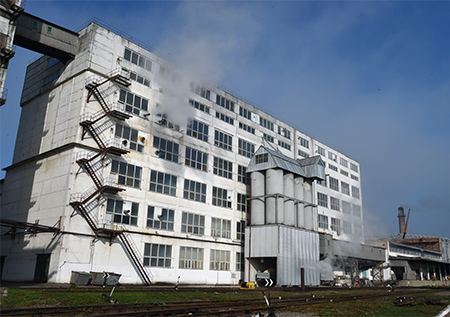
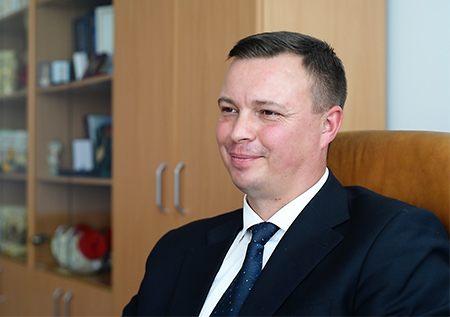
Skvyrskyi Grain Processing Factory in Skvyra, Ukraine (left) and Viktor Doroshenko in his office (right).Photo: ©FAO/Genya Savilov
The Skvyrskyi Grain Processing Factory turns Ukrainian buckwheat, oats, corn, wheat, rye, barley and millet into breakfast cereals, baby foods, flour and other food products. The factory was founded in 1931. During Soviet times the focus was on drying, cleaning and primary processing of grains for local markets, whilst now the company produces an ever-expanding range of grain-based products, including gluten-free and organic cereals. With a declining population in Ukraine and changing consumer preferences, the domestic demand for flour has been steadily decreasing for over a decade. Millers therefore have to diversify and find new export opportunities.
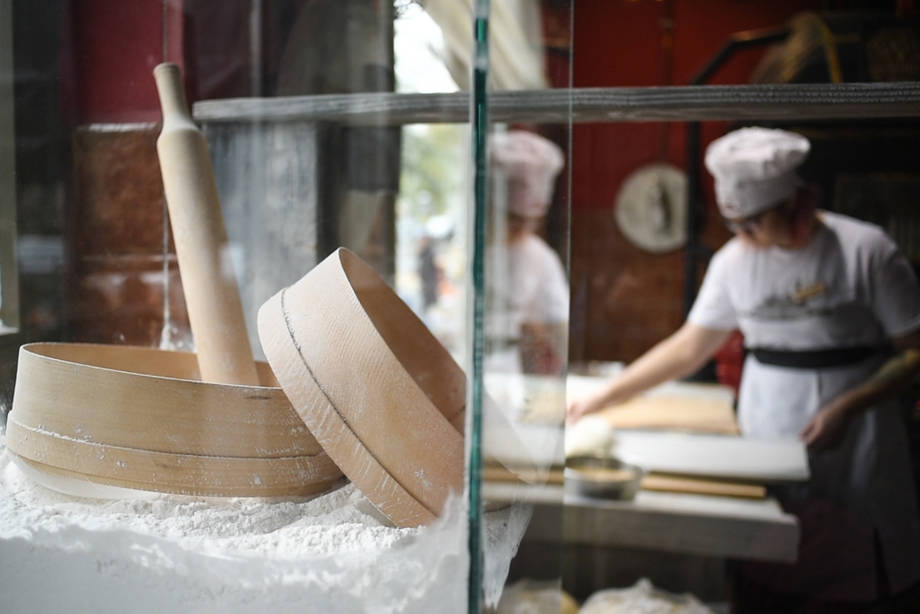
Ukrainian wheat flour being turned into pastries at a bakery in Kiev, Ukraine. ©FAO/David Mansell-Moullin
Ukrainian flour exports have been growing since 2010/11, and over 40 per cent of Skvyrskyi products are now exported. Investment is being funnelled into expanding volumes, marketing and improving the quality of products to meet European and international standards.
“Only with quality can you win foreign markets” explained Viktor who is now travelling frequently to international trade fairs to expand sales. “There are only a few companies that have invested in technologies that can today win the world market with high-quality products.”
To achieve this technological advantage, the factory collaborates with leading global processing technology manufacturers. In 2012, Skvyrskyi Grain Processing Factory invested in a new production line to process maize, and in 2015 they introduced additional lines for processing oats and upgrading lines for buckwheat, wheat, rye, barley and millet processing.
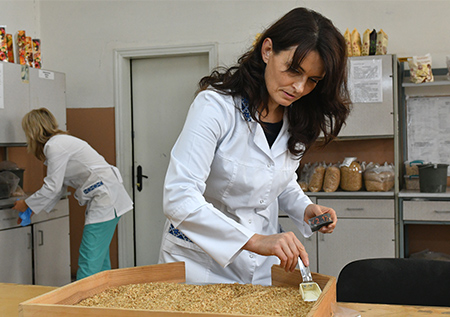
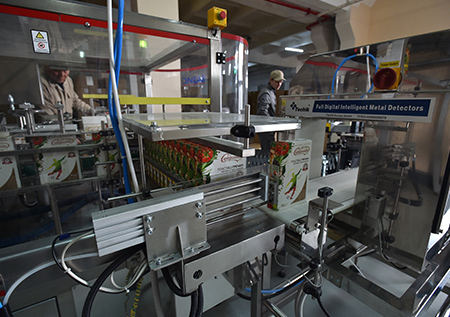
Control of grain quality at the Skvyrskyi laboratory is a priority (left) and modern packaging technologies for Skvyrskyi breakfast cereals.
Investing to meet global demand
“We are now exporting to the European Union, China and other countries in Asia, and also countries in Africa” Viktor said.
Exports will help support Ukraine’s economy and provide affordable nutritious food to expanding populations in these regions.
“Since 2010 FAO has been working with the Ukrainian Government, European Bank for Reconstruction and Development (EBRD) and the private sector to unlock the grain sector’s potential,” said Dmitry Prikhodko, Economist in the FAO Investment Centre who led the FAO-EBRD Grain Policy Dialogue Project Leader.
The results of this dialogue and collaboration have been significant.
“More than USD 1 billion have been invested by EBRD and its clients in grain production, storage, transportation and exports,” Dmitry added.
The FAO Investment Centre has also supported the Union of Ukranian Millers since 2015. The Union of Millers brings milling companies together and provides a unified voice for the sector on issues of state policies, technology, regulations and standards. It also promotes Ukrainian grain products abroad.
“Thank to the cooperation of the Union of Millers and FAO, we have managed to enter the export markets of Asia,” Viktor noted.
In 2016 and 2017, trade missions were organized to Hong Kong, Dubai, Tanzania and Indonesia, and Ukrainian products are increasingly being presented in international food shows.
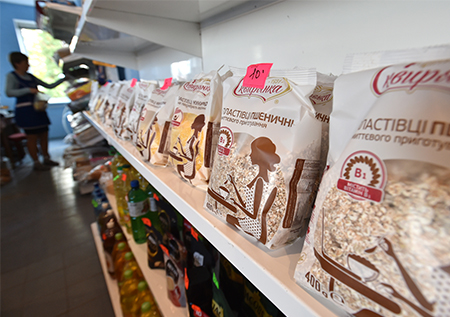

Skvyrskyi cereals for sale on Ukrainian supermarket shelves (left); and cereal products on display in the Ukrainian national stand at a Hong Kong food show (right).
FAO has also been providing guidance to Ukrainian milling companies, via the Union of Millers, on quality issues to meet European and international standards. This work is bearing fruit, as Viktor explained:
“Today we are moving towards the issue of developing common quality standards for flour as well as for cereal products.”
FAO and the Union of Millers have organized training events and conferences to deepen understanding of market opportunities, sanitary and phytosanitary standards, and quality and technological innovations in the flour sector. Looking to the future Viktor said:
“I sincerely hope that Ukrainian processing will take the leading positions in the world, and we will move from grain exports to the export of quality processed grain products.”
This future looks ever closer.
Investing in agriculture can transform lives, reduce hunger and malnutrition, and eliminate poverty. Working with international partners, FAO has contributed to over 2,000 agricultural and rural investment strategies, policies and programmes in more than 170 countries. The majority of this work is carried out by the FAO Investment Centre.
